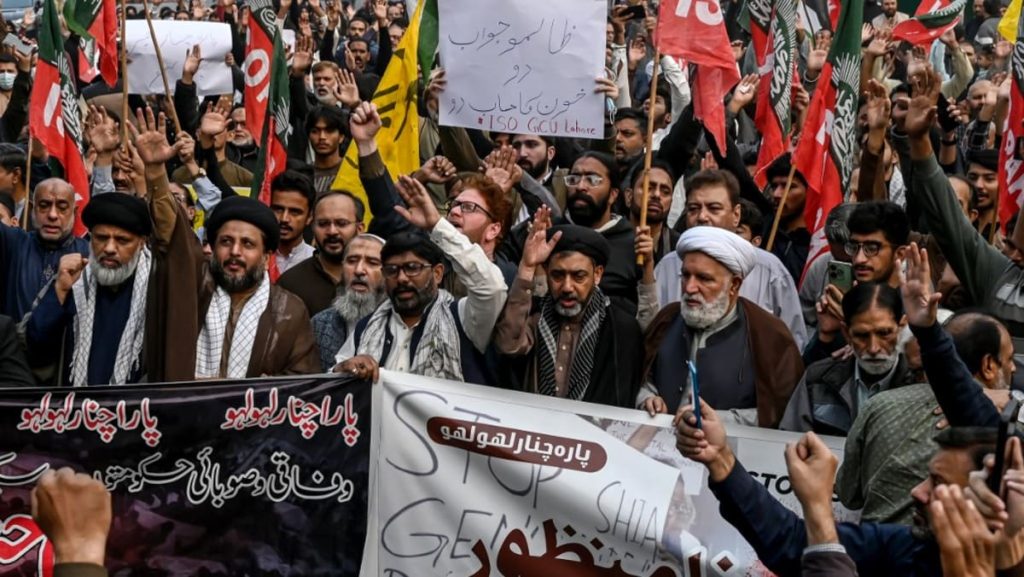Sectarian violence has escalated in Kurram district, Pakistan, resulting in over 130 fatalities despite a fragile ceasefire agreement established by authorities last week. The region, located near the Afghan border, has a long-standing history of sectarian tension, primarily between Sunni and Shia communities. This recent wave of violence ignited last month when clashes erupted, initially sparked by armed attacks on predominantly Shia drivers, leading to a high casualty toll during retaliatory skirmishes. District administration officials report that the death count has reached 133, underscoring the severity of the situation.
Efforts to negotiate peace are ongoing, as local authorities and a government team strive to implement the ceasefire that was brokered on November 24. However, these attempts have seen limited success, with significant challenges in maintaining peace amidst the ongoing hostilities. The ceasefire is expected to last for seven days, but tensions remain high, complicating the peace process. Social and tribal rivalries in Kurram have historically fueled conflicts over territorial and resource-based disputes, creating an environment ripe for violence. The lack of a definitive resolution and the re-emergence of hostilities raise concerns about the effectiveness of current mediation efforts.
Provincial officials, including Khyber Pakhtunkhwa’s Chief Minister Ali Amin Khan Gandapur, have taken visible steps towards addressing the crisis. During a visit to Kurram, Gandapur called for unity among tribal leaders to combat the escalating violence, declaring that any individual engaging in armed conflict would be classified as a terrorist. His remarks reflect a zero-tolerance approach intended to deter further violence and reassure local communities of the government’s commitment to restoring order. Alongside this declaration, enhanced security measures have been promised to stabilize the area and protect vulnerable populations.
Meanwhile, the violence has significantly disrupted daily life and access to medical care in Kurram. The main highway connecting the district to Peshawar has been blocked due to ongoing clashes, complicating efforts to transport injured individuals to hospitals for necessary care. The situation has placed enormous strain on local medical facilities, with Dr. Syed Mir Hassan from Parachinar’s district hospital reporting a critical influx of injured patients and fatalities. His team is working tirelessly to treat patients despite the limitations imposed by transport restrictions, emphasizing the dire humanitarian needs resulting from the conflict.
The increase in casualties highlights the urgent need for comprehensive conflict resolution strategies that address not only the immediate violence but also the underlying sectarian tensions in Kurram. Both communities have expressed their grievances over land and resource disputes, which have historically fueled these conflicts. There is a pressing requirement for a sustained dialogue facilitated by local and national leaders that prioritizes reconciliation and addresses the root causes of the tensions. Without addressing these foundational issues, the risk of renewed violence remains omnipresent.
In conclusion, Pakistan’s Kurram district is experiencing a deeply troubling episode of sectarian violence, leading to significant loss of life and widespread community disruption. While local authorities, tribal leaders, and the provincial government endeavor to mediate a temporary ceasefire, ongoing clashes and a lack of sustained peace initiatives create a critical need for comprehensive resolutions. The humanitarian impact on civilians is dire, with disrupted medical services exacerbating the already precarious situation. Moving forward, collaborative efforts that foster reconciliation between rival groups and address the long-standing grievances are essential to prevent further tragedies and promote stability in the region.

